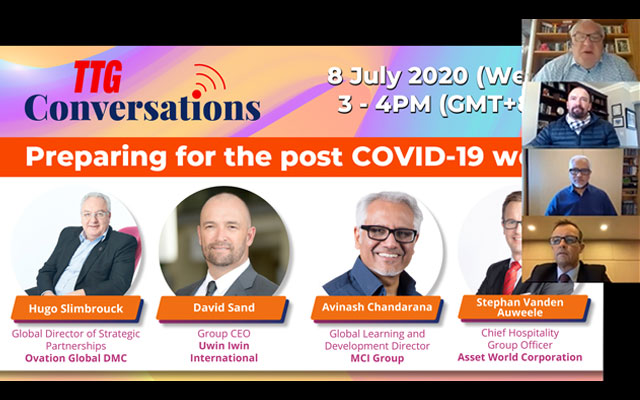Organisers that have moved their physical events to a digital platform are finding themselves faced with new challenges that can impact the quality of attendee engagement, observed MCI Group’s global learning & development director, Avinash Chandarana.
Speaking at the third edition of TTG Asia Media’s TTG Conversations webinar on July 8, Chandarana said that events making a digital shift cannot apply a “cut, copy and paste” approach to its structure and content.

While he agreed that online and offline events may share some “common denominators in meeting design”, digital events have to contend with their own set of challenges in maintaining quality engagement with the audience.
“Why is it that so many online conferences, meetings and seminars crash and burn? There are several reasons. First of all, there is low energy (among the audience). In the online space, audience click to join on a screen. There are no stimuli from the venue or people around them, or from the smells and sights of a physical environment,” he explained.
“Technical issues are also a big challenge, and by default, digital is not easy. The structure of the digital event, the content, and how presenters are adept in delivering content online makes a difference too.
“Distractions are another thing, which could come from other speakers who were not muted, from the participants multi-tasking (while sitting through a digital session), or from children and pets around the house,” he added.
Chandarana said that while one’s attention span at a physical event typically dropped off after 10 minutes, the same would be far shorter in an online space – at just three or four minutes, in his opinion.
As such, he suggested three things that planners should do, based on neuroscience principles, to improve online experiences for their attendees.
First, he recommended “slicing and dicing” content into “smaller pieces to make absorption more manageable and easier to integrate into long-term memory”.
“The magic number for breaking down information is three. When you look at market communications, messages are broken down in threes – Reduce, Reuse, Recyle; and Nike’s Just Do it,” he explained.
Applying the three-part rule to online content, Chandarana suggested that a digital session could comprise an introduction, blended interaction, and finally a Q&A session – and no more than 25 minutes altogether.
Secondly, he recommended splitting content up over several days and to run each online session in short durations to improve content retrieval and recall over time.
“In neuroscience, we know that humans forget very quickly. To get around this, spread content retrieval and recall over time. Who’s to say you’ve got to do eight hours of content in a day?” he said, adding that several short sessions across many afternoons may be more beneficial to the audience.
“Ninety per cent of digital events that are happening right now are webinars,” he remarked, and said that content could also be delivered in the form of fireside chats, masterclasses, collaborative sessions, reflection sessions, lightning talks and virtual cocktails.
Chandarana also recommended appealing to attendees’ emotions through their content.
“Emotion trumps rational thinking. The way we choose our partner, who we vote for, and what we buy are driven by emotion, before we rationalise it (with facts). Can we create a positive emotional rush in the online world? Yes, we can, through multi-sensory experiences.
“There are many ways of doing that. One of that is to make story-telling part of your content, and the other is to use powerful visuals. Believe it or not, you can also create a sense of smell in the digital world. We can deliver food to attendees, or have them smell things around the house to invoke certain emotions.”
A recording of TTG Conversations: Preparing for the post-Covid-19 world can be viewed here.











